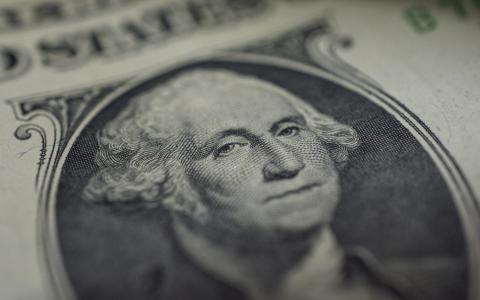
(Fortune) - The Federal Reserve’s policymakers kept interest rates flat Wednesday, but signaled a rate cut would be coming soon.
The rate-setting committee offered few specifics on the central bank’s upcoming plans in its statement released Wednesday. However, today’s decision to hold interest rates steady makes a cut a strong possibility at the next meeting in September if inflation comes “down quickly” and the labor market remains “consistent” with where it is at the moment, according to Federal Reserve Chair Jerome Powell.
In that case “then I would think that a rate cut could be on the table at the September meeting,” Powell said.
But Powell also repeatedly left the door open to not cut rates at the next meeting, should inflation worsen. Throughout his remarks he was clear that it was too early to make a definitive prediction until September.
Investors, too, were already looking toward the next meeting. “Today’s meeting is all about laying the groundwork for a September rate cut,” said Lara Rhame, chief U.S. economist at FS Investments.
For some economists, that would be too late. In fact, there is a chorus of economists and investors who believe even a July rate cut would have been too late. They argue that the Fed’s preferred inflation metric, the personal consumption expenditures (PCE) index, has been approaching its 2% target for months. But approaching a target is not the same as hitting it. For months the Fed has been clear that while the economy is making progress on inflation it wants to see evidence this trajectory is becoming permanent.
Since the beginning of the year Powell has been warning that he wants “more good data” that would demonstrate inflation won’t get stuck above the Fed’s target rate. The data so far seems to point to inflation’s continuing to fall, although it doesn’t yet guarantee it, according to Powell. “More good data would cause us to gain more confidence,” he said Wednesday.
Some investors agreed with Powell’s preference to wait for more data. “Waiting until the September [meeting] for the start of a rate cut campaign gives the Fed two more CPI reports to react to, which may confirm the nascent disinflationary trends that have begun to unfold over the last few months,” said Mike Reynolds, vice president of investment strategy at Glenmede, before the Fed’s announcement.
The latest data from June showed the PCE was up 2.5% compared with the same time last year. That number represented a slight dip from May when the PCE index was up 2.6%. Overall inflation, measured in the consumer price index, rose 3.0% in June compared with the prior year. Notably, however, it fell 0.1% compared with May. That was the first time the consumer price index declined month over month since May 2020—more than four years ago.
The data has been positive but uneven and difficult to parse, making the Fed especially worried about ruining the progress it has made on lowering inflation without spiking unemployment. “Fed rate cuts will be surgical, think a nip and a tuck, meaning they will need to be carefully done under the right circumstances,” Rhame said.
The general trajectory of these numbers shows that inflation has come down significantly from its peak in the summer of 2022. But despite stabilizing, it still hasn’t come down enough for the Fed to feel comfortable about lowering rates.
Some economists consider Powell’s approach overly cautious. About 25% of the economists polled in the Wall Street Journal’s quarterly economist survey said the Fed should have cut rates at the current July meeting. Notably, though, only 2% thought the Fed actually would.
“The Fed is being extra cautious because they want to make sure inflation has indeed turned the corner, but that could be costly in terms of risking an unnecessary deterioration in the labor market,” Oscar Muñoz, chief U.S. macro strategist at TD Securities, said in a note.
Nobel Prize–winning economist Paul Krugman said, “The Fed should cut rates now now now,” in a post on X on Monday. Krugman cited a specific metric from the Federal Reserve Bank of New York that aims to measure inflation’s “persistence.”
For his part, Powell has maintained that his focus was on the Fed’s dual mandate of lowering inflation while maintaining near maximum employment. He has mostly succeeded in this goal, as inflation has undoubtedly come down while the job market has remained historically strong.
But progressives point to a sharply slowing job market, which could be an early sign of a recession. On Wednesday job growth in the private sector slowed more than expected, adding just 122,000 jobs in July, according to data from ADP, while the unemployment rate for June ticked up to 4.1% from 4% in May. That comes after the unemployment rate had been below 4% since February 2022.
Powell characterized this as a stabilization of the labor market. “Conditions in the labor market have returned to about where they stood on the eve of the pandemic: strong, but not overheated,” he said.
But he made clear he wouldn’t like to see it worsen. “I would not like to see material further cooling in the labor market,” Powell told reporters.
By Paolo Confino



